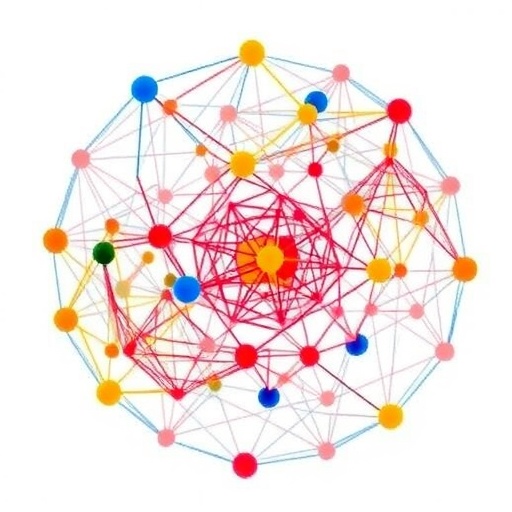The Hidden Markov Model: A Cornerstone in Bioinformatics Revolution
In the dynamic realm of computational biology, the hidden Markov model (HMM) stands out as a pivotal statistical framework that has reshaped our approach to understanding biological sequences. Originally conceived to model stochastic processes mathematically, HMMs have evolved into indispensable instruments in the bioinformatician’s toolkit, driving forward research on genome annotation, protein structure prediction, and beyond. Researchers from Harbin Medical University recently distilled the essence of HMMs and their extensive applications in a comprehensive review published in Genes & Diseases, offering critical insights into both theoretical foundations and practical implementations.
At its core, the hidden Markov model is a probabilistic graphical model designed to handle data with underlying, unobservable states. It comprises two stochastic processes: an observable sequence (emissions) and a hidden sequence (states), connected via transition and emission probabilities. This dual-layered stochasticity allows HMMs to model complex biological phenomena, such as genomic sequences or protein domains, where the underlying biochemical state is not directly observable but inferred through measurable data.
Three canonical problems define the operational framework of HMMs: evaluation, decoding, and learning. The evaluation problem concerns computing the probability that an observed sequence was generated by a particular model configuration. The decoding problem involves determining the most likely sequence of hidden states that produced the observed data, for which the Viterbi algorithm is often employed. The learning problem pertains to adjusting the model parameters to maximize the probability of observed sequences, commonly addressed through the Baum-Welch algorithm, an instance of the Expectation-Maximization approach.
The practical utility of HMMs in bioinformatics spans diverse domains. A quintessential application is in transmembrane protein topology prediction. Proteins that traverse cellular membranes possess regions that are structurally and functionally distinct, often characterized by hydrophobic and hydrophilic amino acid segments. HMMTOP and related tools utilize HMMs to transform the amino acid sequences and their corresponding membrane positions into a hidden Markov process, where the Viterbi algorithm determines the optimal state sequence, revealing the topology. This approach critically informs drug design and structural biology by highlighting membrane-spanning helices and extracellular loops with high accuracy.
Gene finding represents another transformative application. The genomic architecture of eukaryotes, with its complex exon-intron configurations, demands sophisticated models to discern coding regions. Advanced generalized HMMs underpin widely-used gene prediction software such as GENSCAN and AUGUSTUS, which exploit the statistical properties of nucleotide sequences to predict exon–intron boundaries with remarkable precision. These predictions greatly facilitate genome annotation efforts across species, expediting insights into gene function and regulation.
Multiple sequence alignment, a fundamental bioinformatics technique, benefits significantly from profile HMMs. These models capture position-specific information for protein families, enabling sensitive homology detection and functional annotation. Tools like Pfam and HMMER have become cornerstones in protein family classification, relying on profile HMM architectures to uncover distant evolutionary relationships that traditional alignment methods may miss. This depth of analysis is instrumental for understanding protein evolution and guiding experimental research.
Moreover, HMMs provide statistically rigorous methods for CpG island prediction. CpG islands, characterized by a high frequency of cytosine-guanine dinucleotides, play critical roles in epigenetic regulation and gene expression. By modeling the stochastic properties of nucleotide compositions, HMMs help identify these islands reliably, facilitating studies on gene methylation patterns and their implications in diseases such as cancer and developmental disorders.
Copy number variation (CNV) detection is another bioinformatics frontier where HMMs have demonstrated exceptional sensitivity. CNVs encompass genomic segments that vary in copy number among individuals and are implicated in genetic diversity and complex disease susceptibilities. Computational tools like PennCNV and QuantiSNP leverage HMMs to model signal intensity data from genotyping arrays or sequencing, enabling precise boundary detection of CNVs. This statistical robustness is vital for advancing personalized medicine and understanding genotype-phenotype correlations.
Despite their versatility, HMMs are not without limitations. The linear chain structure presupposes Markovian properties that may oversimplify biological realities. Computational demands escalate with model complexity and data size, posing challenges for large-scale genomic analyses. Nevertheless, the interpretability and statistical rigor of HMMs continue to attract widespread usage, particularly when integrated with high-throughput sequencing, multi-omics data, and contemporary machine learning techniques.
Harbin Medical University’s review underscores the imperative for future innovations, advocating the fusion of HMMs with next-generation sequencing technologies and multimodal data integration. Such approaches promise to enhance model accuracy and biological relevance, reinforcing the role of HMMs in the burgeoning era of precision medicine and systems biology.
By weaving together a robust theoretical framework and demonstrating extensive practical applications, this review reaffirms HMMs as a foundational pillar in bioinformatics research. As biological datasets grow exponentially in scale and complexity, the statistical acumen and adaptability of hidden Markov models will be crucial for unlocking the secrets embedded within the genome and proteome.
In conclusion, the enduring value of HMMs in bioinformatics lies in their capacity to model hidden biological processes through observable sequences, providing a statistical lens to untangle the complexities of life’s molecular machinery. Their integration with emerging computational paradigms heralds a future where genome annotation, functional genomics, and therapeutic discovery are profoundly accelerated by these powerful models.
Subject of Research: Hidden Markov Models in Bioinformatics
Article Title: The hidden Markov model and its applications in bioinformatics analysis
News Publication Date: Not specified
Web References:
- Journal website: https://www.sciencedirect.com/journal/genes-and-diseases
- Direct DOI link: http://dx.doi.org/10.1016/j.gendis.2025.101729
References:
- Ma, Y., Chen, H., Kang, J., et al. (2025). The hidden Markov model and its applications in bioinformatics analysis. Genes & Diseases. DOI: 10.1016/j.gendis.2025.101729
Image Credits: Yingnan Ma, Haiyan Chen, Jingxuan Kang, Xuying Guo, Chen Sun, Jing Xu, Junxian Tao, Siyu Wei, Yu Dong, Hongsheng Tian, Wenhua Lv, Zhe Jia, Shuo Bi, Zhenwei Shang, Chen Zhang, Hongchao Lv, Yongshuai Jiang, Mingming Zhang
Keywords: Bioinformatics, Hidden Markov Model, Viterbi algorithm, Baum-Welch algorithm, transmembrane protein prediction, gene finding, multiple sequence alignment, CpG island prediction, copy number variation detection




